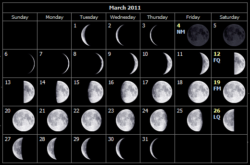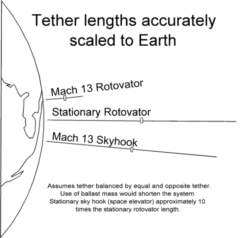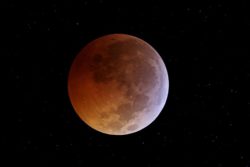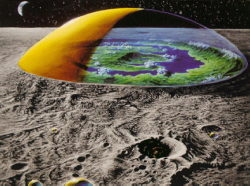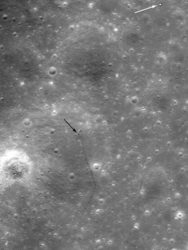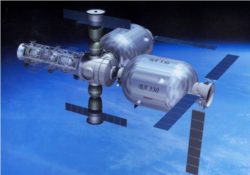Monthly Stargazing Calendar for March 2011
This month, on the 20th, an equinox will occur. The Sun will shine directly on the equator and there will be nearly equal amounts of day and night throughout the world.
Non-Rocket Spacelaunch – Tether propulsion safety issues
The use of tethers in space poses many challenges and safety issues. This third part to the tether propulsion article will focus on those issues. A lot of the challenges and safety issues of a space tether system are similar to those of a space elevator described in a previous article, but some are unique to the space tether concept.
Non-Rocket Spacelaunch – Tether propulsion
Tether propulsion consists in using long, very strong cables (known as tethers) to change the velocity of spacecraft and payloads. The tethers may be used to initiate launch, complete launch, or alter the orbit of a spacecraft. This form of propulsion would be significantly less expensive than spaceflight using modern rocket engines.
Non-Rocket Spacelaunch – Space Elevators in Fiction
This is the fourth and final part of the space elevator article of the non-rocket spacelaunch methods article series. This post will focus on references to the space elevator concept in fiction. The first mention of anything remotely similar to a space elevator was the beanstalk in the children's fairy tale called Jack and the Beanstalk, published in 1807.
Non-Rocket Spacelaunch – Extraterrestrial Space Elevator Concepts
Space elevators, a futuristic concept, could be adapted for various celestial bodies: Mars, the Moon, and even asteroids, they promise a revolution in space access.
Non-Rocket Spacelaunch – Space Elevator
Why non-rocket spacelaunch? Because the current chemical rockets are really expensive. In order to further explore outer space and establish a permanent human presence in space we need more cost efficient spacelaunch methods.
Fireworks Galaxy & Moon + ISS alignment
🙂 I hope you all had lots of fun yesterday while celebrating the coming of 2011. Apparently humans weren’t the only ones playing with fireworks… Here is a picture of some cosmic fireworks. This galaxy was nicknamed the “Fireworks Galaxy” for good reason. Over the last century, at least nine supernovae were discovered in that galaxy. By comparison, the average rate for supernovae in the Milky Way is about 1 per century. A supernova can be brighter than whole galaxies for some time after the explosion. That’s some fireworks! This beautiful spiral galaxy, also known as NGC 6946, is located 10 million light-years away in the constellation of Cepheus. It…
Astronomy Picture of the Week – 2010 Lunar Eclipse
Last week, on December 21 we witnessed a lunar eclipse. Below are some pictures of the eclipse: Image Credit & Copyright: Chris Hetlage Image Credit & Copyright: Itahisa N. González (Grupo de Observadores Astronómicos de Tenerife) Credit & Copyright: Jerry Lodriguss (Catching the Light)
An Artist’s Vision of a Future Colony on the Moon
Some time ago, I posted an image of the Copernicus Crater for the Astronomy Picture of the Week. Now I stumbled upon an amazing painting by Marshal T. Savage depicting his vision of a future colony on the Moon. It’s the same Copernicus Crater, except it’s domed over and terraformed to create an ecosphere. At first I thought that this was really cool, but it would be impossible to build such a gigantic structure. (The crater has a diameter of 93 kilometers!) However after giving it some thought I changed my mind. If it was built with a material strong enough like carbon nanotubes, it could in theory be built. While…
Astronomy Picture of the Week – The Copernicus Crater
Copernicus is one of the largest lunar impact craters on the visible hemisphere of the Moon. It was named after the Polish astronomer Nicolaus Copernicus. The crater is estimated to have formed about 800 million years ago during the Copernican period of lunar history, which was named after the crater. Copernicus is visible using binoculars, and is located slightly northwest of the center of the nearside, in eastern Oceanus Procellarum. The crater has a diameter of 93 kilometers and a maximum depth of 3.8 kilometers. Copernicus also has a dozen satellite craters ranging between 3 and 7 kilometers in diameter. By convention they share the name of the main crater…
Rover Spotted On The Moon
The Russian Lunar rover Lunokhod 2 was recently spotted on the Moon’s surface. As shown in the photo below, the black arrow indicates where the tracks begin, while the white one shows the resting place of the rover. The arrows were placed by Phil Stooke, geography professor at University of Western Ontario. Richard Garriott, a successful video game developer and one of fewer than 10 private citizens to travel into space is the current owner of Lunokhod 2. He acquired it for over $68,500 when it was listed for sale in 1993 Sotheby’s auction. After seeing those findings, he mentioned plans to go see the rover from lunar orbit, or…
Inflatable Space Stations
NASA is considering the use of inflatable modules for the International Space Station (ISS). This idea has been proposed as early as in the 1960s, but it has never been put to use in space until Bigelow Aerospace took over the idea and developed two working prototypes and tested them in space.

